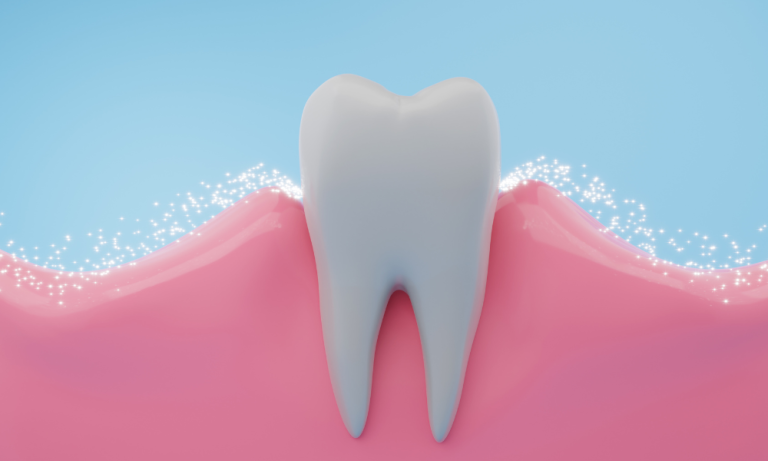Healthy gums are essential for a bright smile and strong teeth. When our gums have issues, such as swelling or bleeding, gum treatment becomes necessary. Understanding what happens during gum treatment can help ease any concerns and prepare us for the steps involved.
Initial Consultation and Diagnosis
The first step in gum treatment is the initial consultation and diagnosis. During this visit, the dentist carefully examines our gums to understand the extent of the issue. They use several tools and techniques to get a complete picture of our gum health.
- Medical History Review: The dentist starts by asking about our medical history. They want to know about any pre-existing conditions, medications, and recent health changes. Understanding our overall health helps the dentist identify any factors contributing to gum problems.
- Gum Examination: The dentist then performs a thorough examination of our gums. They look for signs of gum disease, such as redness, swelling, and bleeding. They also check for gum recession and pockets, which are spaces that can develop between the gums and teeth.
- X-Rays: If needed, the dentist might take X-rays to see the underlying bone structure and detect any hidden issues. X-rays help identify bone loss or other problems that aren’t visible during a regular exam.
- Periodontal Probing: The dentist uses a small, ruler-like tool called a periodontal probe to measure the depth of the pockets around our teeth. Healthy pockets are shallow, while deeper pockets can indicate gum disease.
This comprehensive diagnosis helps the dentist create a personalized treatment plan. By catching gum issues early, we can prevent them from becoming more serious.
Non-Surgical Gum Treatments
Non-surgical gum treatments are usually the first line of defense against gum disease. These treatments aim to control the infection and stop the gum disease from progressing. They are less invasive and can be very effective in improving gum health.
- Scaling and Root Planing: This deep-cleaning procedure removes plaque and tartar from above and below the gum line. Scaling involves scraping away tartar, while root planing smoothes the roots of our teeth to help the gums reattach. This treatment is essential for treating early-stage gum disease.
- Antibiotics: Sometimes, the dentist may prescribe antibiotics to help control the bacterial infection in our gums. Antibiotics can come in the form of mouth rinses, gels, or oral medications. They help reduce the bacteria that cause gum disease.
- Laser Therapy: In some cases, dentists use lasers to remove infected gum tissue and kill bacteria. Laser therapy can be less painful and promote faster healing compared to traditional methods.
- Mouth Rinses and Topical Treatments: Dentists may recommend specific mouth rinses or topical treatments to keep our gums healthy. These products often contain antimicrobial agents that help reduce plaque and bacteria.
Non-surgical treatments can be very effective if we catch gum disease early. By following the dentist’s recommendations, we can manage gum disease and maintain healthier gums.
Surgical Gum Treatments
When non-surgical treatments are not enough to treat severe gum disease, surgical options may be necessary. These procedures aim to restore gum health by addressing deeper issues that cannot be managed through simpler treatments.
- Flap Surgery: Flap surgery, also known as pocket reduction surgery, involves lifting the gums to remove tartar and bacteria from deep pockets. After cleaning, the gums are sutured back in place, reducing the pocket depth and making it easier to keep the area clean.
- Bone Grafts: For cases where gum disease has resulted in bone loss, bone grafts may be used. This treatment involves placing natural or synthetic bone in the affected area to promote new bone growth. It helps restore the stability of the teeth.
- Soft Tissue Grafts: When gum disease causes significant gum recession, soft tissue grafts can be performed. Tissue, often taken from the roof of the mouth, is attached to the affected area to cover exposed roots and enhance the gum line.
- Guided Tissue Regeneration: This procedure is used alongside flap surgery to stimulate bone and tissue growth. A special biocompatible membrane is placed between the bone and gum tissue, encouraging the body to regenerate bone and tissue where it is needed.
Surgical treatments target advanced gum disease, aiming to restore health and function to the gums and teeth. While these procedures may sound daunting, they are crucial for preventing further damage and ensuring long-term oral health.
Post-Treatment Care and Maintenance
After gum treatment, proper post-care is essential for healing and maintaining the health of our gums. Following the dentist’s instructions and practicing good oral hygiene can make a significant difference in our recovery and long-term gum health.
- Follow-Up Visits: Regular follow-up appointments with the dentist ensure that our gums are healing properly. These visits allow the dentist to monitor our progress and make any necessary adjustments to our care routine.
- Oral Hygiene Routine: Maintaining a diligent oral hygiene routine is vital. This includes brushing twice a day with a soft-bristled toothbrush, flossing daily, and using any recommended mouth rinses. Good oral hygiene helps prevent the recurrence of gum disease.
- Diet and Lifestyle: Eating a balanced diet rich in vitamins and minerals supports gum health. Avoiding tobacco products and reducing sugar intake can also help protect our gums from further issues.
- Pain Management: If we experience discomfort after treatment, the dentist may recommend pain relievers or special oral rinses. It’s important to follow their guidance to manage pain and promote healing.
Taking care of our gums doesn’t end with the treatment. Ongoing care and maintenance are key to ensuring our gums remain healthy and preventing future problems.
Conclusion
Understanding what happens during gum treatment helps demystify the process and prepares us for each step. Each phase is crucial for restoring and maintaining gum health, from the initial consultation and diagnosis to the different treatment options and post-care.
Taking proactive steps to care for our gums can prevent serious issues. Whether non-surgical treatments or surgical interventions are needed, following the dentist’s guidance and maintaining good oral hygiene are essential for successful outcomes.
Invest in your gum health by scheduling a consultation with Colorado Gum Care Northglenn, CO. Our experienced team of dentists in Colorado is dedicated to providing comprehensive care to ensure your gums stay healthy and your smile remains bright. Call us today to book your appointment and take the first step towards healthier gums.







